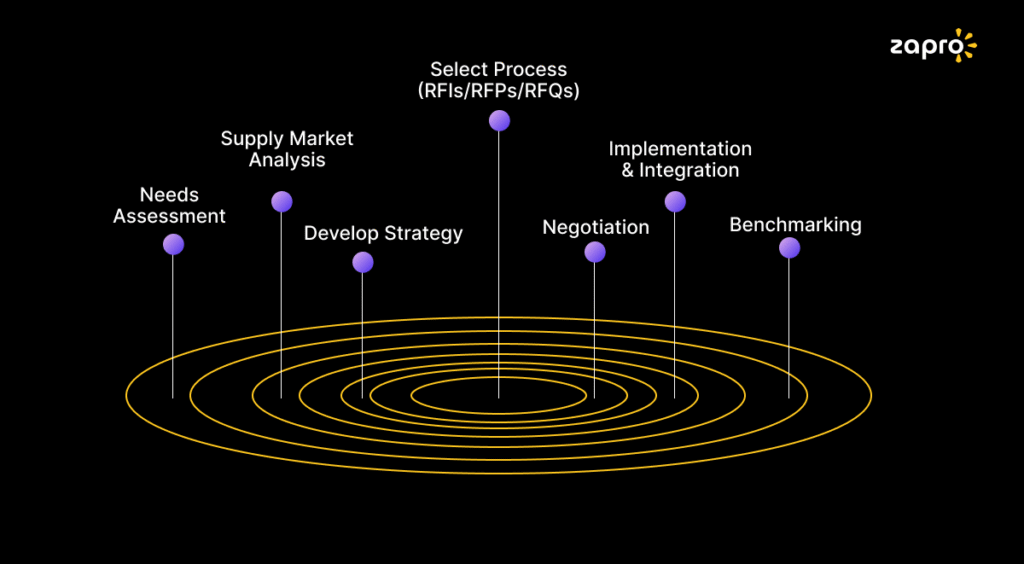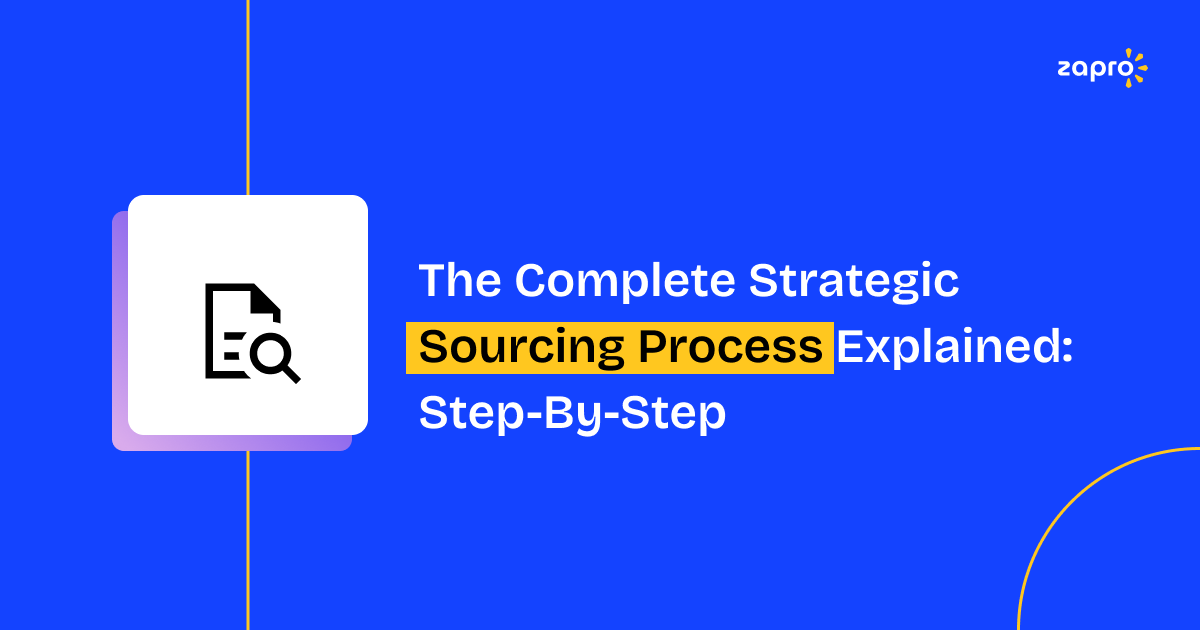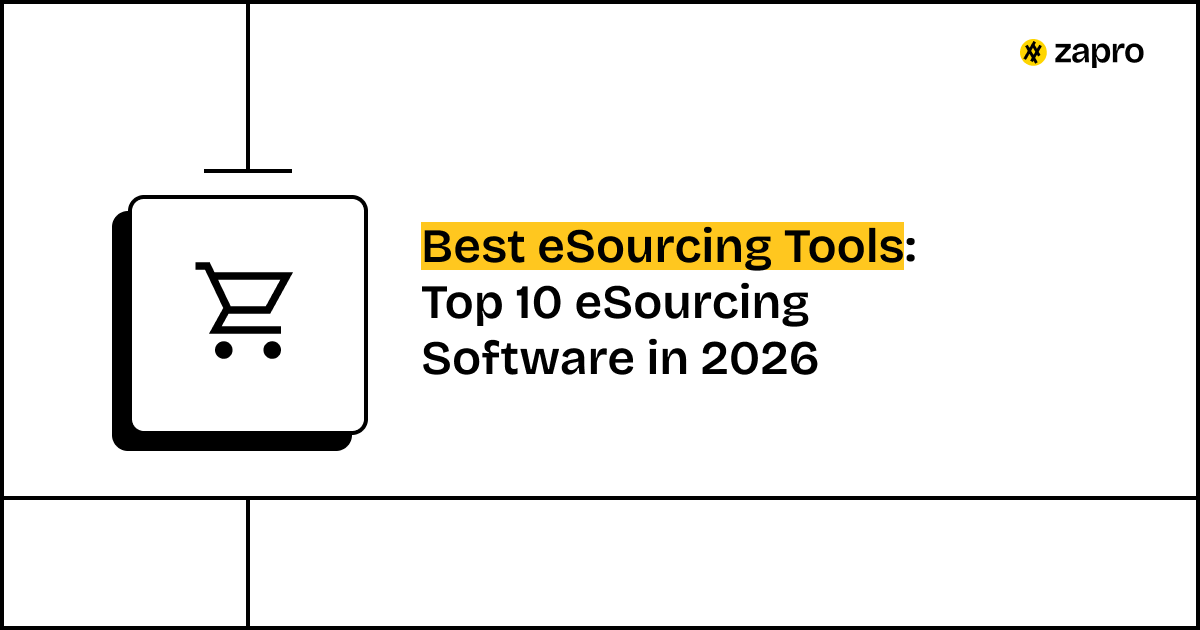The world today is fast-paced witnessing a lot of changes!
The supply chain and procurement processes are under the spell of digital transformation which heavily impacts the strategic sourcing as well . Therefore, organizations need to learn about what is being purchased, from where it is sourced, and at what price. Strategic sourcing optimizes the sourcing process through ongoing market study and connections with suppliers, in the process, prioritizing the total costs of ownership and the original purchase price.
Procurement managers can ensure they purchase specific services or goods from high-quality and reliable suppliers by applying a strategic sourcing strategy. The role of strategic sourcing services is to streamline the process, even though it may seem a little complex at first.
What Is Strategic Sourcing?
In simple terms, strategic sourcing is part of a broader, comprehensive procurement process that comprises data collection, spend analysis, market research, supplier negotiation, and contract management. It concludes before the payment is made for purchasing the goods or services. One of the main advantages of implementing strategic sourcing is to boost the profitability. Based on the business needs, it can be customized and set up to accelerate growth, process, and profitability.
Businesses employ strategic sourcing platform to optimize the purchase and supply chain management. This approach helps reduce costs, improve quality, and increase overall efficiency. Therefore, the businesses can devote more time to staying focused on their revenue-generating part. Strategic sourcing and traditional sourcing are not the same; the former is used for the complete life cycle of a product, while the latter is used for the initial purchase price.
What Is the Sourcing Process?
Sourcing process is related to identifying and evaluating potential suppliers that empower a business to operate conveniently. Strategic sourcing focuses on the mutual benefits of cooperation shared by both parties. Suppliers play a crucial role in providing a competitive advantage through their innovative product offerings, and in return, they expect your commitment to long-term strategic collaboration.
Therefore, this process involves identifying the required goods or services. Furthermore, it involves shortlisting potential suppliers, assessing the suitability of each supplier, and establishing a long-term working relationship with the supplier.
7 Steps in the Strategic Sourcing Process

Let us discuss in detail the 7 steps that play a prominent role in the Strategic sourcing process:
Step 1: Needs Assessment
The needs assessment stage of the strategic sourcing process involves evaluating the present condition and understanding the company’s requirements for the goods or services to be sourced. This includes identifying the specific needs of the company in terms of quantity, quality, delivery times, and other factors, as well as considering the budget and other constraints that may impact the sourcing process.
The needs assessment stage is crucial in the strategic sourcing process as it helps identify the most suitable suppliers and negotiate the most suitable feasible terms for the goods or services it requires. This stage may include collecting and analyzing data on the supplier base. This would help decipher all gaps or weaknesses in the present sourcing strategy, therefore paving the way for greater understanding of the business’s requirements and goals.
The needs assessment stage might also include consulting with relevant stakeholders, such as department heads or key decision-makers. This would help in understanding the business’s needs and requirements.
Step 2: Supply Market Analysis
At this stage, the business aims to compile an ideal list of potential suppliers that can meet its needs. During this phase, the business team is likely to conduct market research, find new suppliers through online databases, and also keep the existing supplier relationships.
The stage is going to look into all the details, ranging from the quality, cost of the goods or services, the reputation and reliability of the supplier, and the delivery timeline. Also, it is important to keep an eye on the supplier location as it can impact delivery time and transit costs.
This stage of the strategic sourcing process demands the compilation of a diverse list of potential suppliers. This would open up opportunities and provide an extra hand in choosing from a wide range of options. Bottom line, it ensures that the business selects the ideal supplier to meet its requirements.
Step 3: Develop a Strategic Sourcing Strategy
This step will help businesses ward off risks and extra expense by helping make the right decision on how and where to buy. It is good to go with the existing and potential supplier list to get good mileage from the supplier pool.
It is ideal to go with the selection based on your goals, capabilities, and resources. This can be achieved once the company’s purpose and the minimal requirements for suppliers are determined.

Successful companies have realized that defining such a strategy and its business benefits not only supports effective operations but also minimizes downstream vendor management risks.
Step 4: Select the Strategic Sourcing Process
After the supplier market research is done, requesting RFIs, RFPs, and RFQs from suppliers is the 4th step of the strategic sourcing process. This helps in choosing the supplier and drafting the perfect negotiation plan. In order for the suppliers to understand the organizational demands, it is vital to share the requirements of the business.
Come up with appropriate plans for your company to meet its goals and submit a comprehensive proposal. The provided information should include important details, such as pricing structure, delivery options, warranty terms, product or service specifications, and more. After gathering this data, you can establish criteria for selecting suppliers based on your sourcing capabilities.
Step 5: Negotiation
Talking to the most preferred supplier numerous times is part of the plan. Always go with the pre-established standards in picking the favaroble provider. Ensure the contract is drafted and signed by both parties; for many, skip this important step and think about it later. Automating all the steps in the process allows software solutions to make contract management more efficient and easier to handle.
Step 6: Implementation and Integration
It is essential in strategic sourcing to keep in touch with suppliers. Send out messages to successful vendor management participating in the implementation stage. Maintain a good relationship with the vendors to increase cooperation. During the implementation stage, inform your vendors of all the developments and let them know about the meetings and conversations you had.
Step 7: Benchmarking
The supplier selection and onboarding process marks the initial step in your strategic sourcing efforts. The final and most critical phase involves accurately assessing how suppliers perform about the organization’s needs and goals. Assess their performance according to the terms and conditions mentioned in the contract.
It is important to keep a tab on supplier performance at regular intervals and determine options for improvement. This practice helps businesses identify supplier risks and create strategies to avoid supply chain disruptions in the future.
The evolving corporate environment, the changing trends, new tools, and techniques demand the best approaches to stay in the market. As a result, Strategic sourcing is not a one-time step up and move on; it is an ongoing process. If the contract is about to expire, it is important to run a deep study on its importance in all the related processes, spend data, and market research. Also, keep it open for negotiations if needed.
Streamline Your Strategic Sourcing Process With Zapro.ai
The Zapro.ai platform lets organizations customize according to their business needs, thereby, providing a strategic advantage. Therefore, it is easy for the organization to manage strategic sourcing and run the procurement processes hassle-free.
The strategic sourcing process comprises numerous steps from identifying a potential supplier to evaluating their suitability for the business, negotiating terms and contracts, and then establishing long-term working relationships. Zapro.ai offers a comprehensive platform to ensure the smooth running of the process. It provides a 360-degree view in each step, which helps identify the milestones and potential bottlenecks.
Zapro.ai effortlessly eliminates many manual tasks that work with strategic sourcing. By doing so, it helps save a lot of time and increases efficiency. Do you want to know how it will work for your business? Talk to our experts for a free demo.
Businesses depend on Process Managers and Owners to enhance operations and boost efficiency. A low-code strategy simplifies workflow automation like never before. Discover how Zapro.ai revolutionizes process management.
Start using the Zapro.ai Platform and discover how to utilize its features for improved results.
Master the strategic sourcing process with ease.

Don’t miss our weekly updates
We’ll email you 1-3 times per week—and never share your information.

 Healthcare
Healthcare Financial Services
Financial Services Technology
Technology Venture Capitalist
Venture Capitalist Chief Procurement Officer
Chief Procurement Officer Chief Financial Officer
Chief Financial Officer




